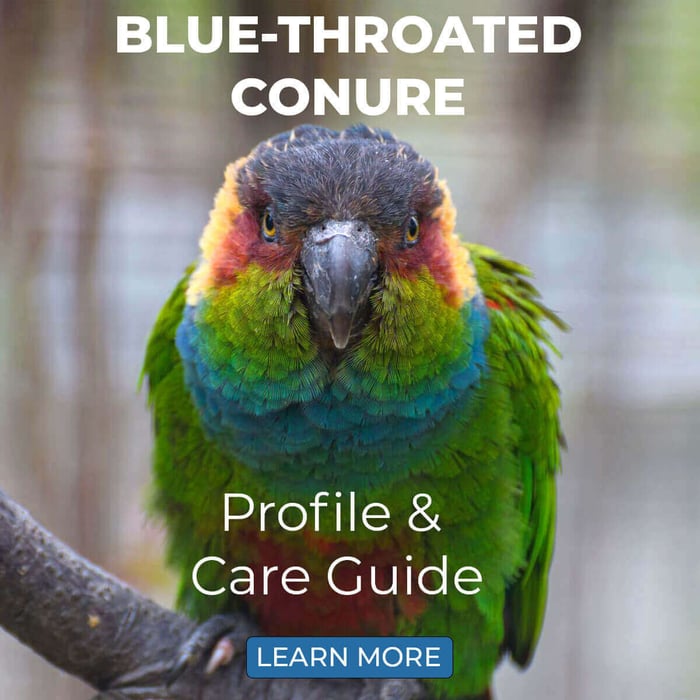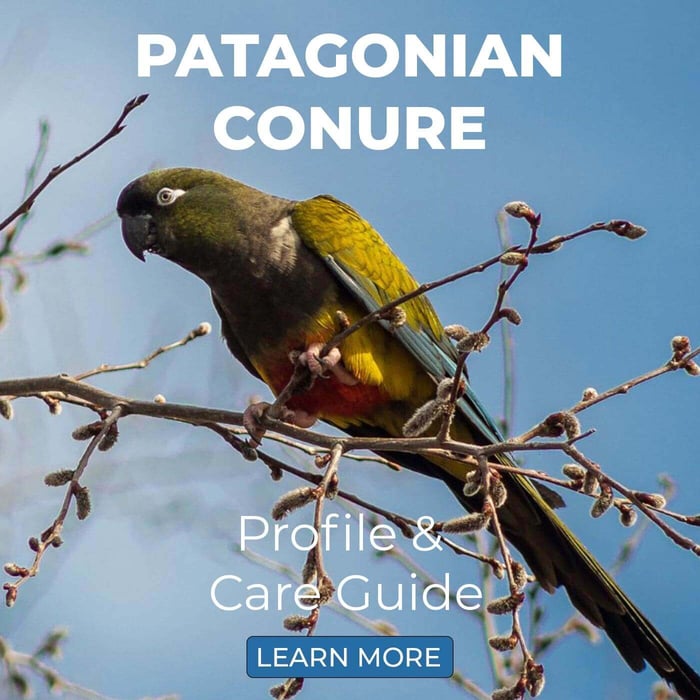7 Types of Conure Toys Your Bird Will Love
Did you know that parrots love to play? Conures are no exception! For a happy and healthy bird, you should give your green cheek, sun, or jenday plenty of conure toys to chew, shred, preen and ring.
Not sure where to start? No worries: Parrot Essentials has got you covered. Let's have a look at 7 great conure toys that your bird is sure to enjoy!
Why do conures need toys?
If you've had your conure for a while, you'll know that no matter the exact species, these parrots are smart, extremely energetic, and have no 'OFF' button. They love spending entire days exploring, foraging, and destroying whatever they can get their strong beaks on.
One way to burn off some of that endless conure energy is to spend time training or playing with your bird. However, it's also important for it to know how to entertain itself, as you aren't always going to be around 24/7.
A parrot stuck in a cage without toys to play with, will quickly become bored. The lack of stimulation can lead to all sorts of issues: feather plucking, excessive vocalisation and even aggression as a result of the sheer frustration. Additionally, toys help to redirect your bird's attention away from the items you don't want it to destroy, like your furniture and walls.
In order to keep things interesting for your conure, be sure to rotate new toys in and out every other week or so, removing any that have been destroyed to prevent dangerous situations from arising. You can always use the bits that aren't broken to make new toys.
Tip: If your conure has never had access to toys before, like if it was a rescue, it may be scared of them at first. Careful encouragement, treats, and even demonstrations can help it learn how to play.
Let's have a look at 7 conure toys that your bird will love to play with. Remember that you'll need small (for green cheeks, painted conures and the like) to medium-large-sized (scarlet fronts, Patagonian conures, etc.) toys.
1. Conure chew toys
Most conures, like the majority of parrots, naturally nest in hollow trees (although half-moon conures prefer using arboreal termite nests as their homes). In order to keep their nests looking their best, they use their strong beaks to chew and trim the wood where needed.
Additionally, conures use their beaks to access food. Cracking hard nuts and peeling away bark is a breeze when you have the natural equivalent of a can opener on your face! Given this, it's not surprising that conures have a strong natural chewing instinct. They just can't resist shredding and destroying anything they can find, including your home décor.
You shouldn't discourage your conure from chewing, but you can, of course, redirect the behaviour. The best way to do so is to offer plenty of fun chew toys made of natural wood. Parrot-safe branches collected outside work well, but you can also opt for toys made out of materials like balsa, cholla cactus, vines of various trees, and more. For the incurable chewers, you can even opt for some manzanita wood, which is particularly hard and sturdy.
2. Conure foraging toys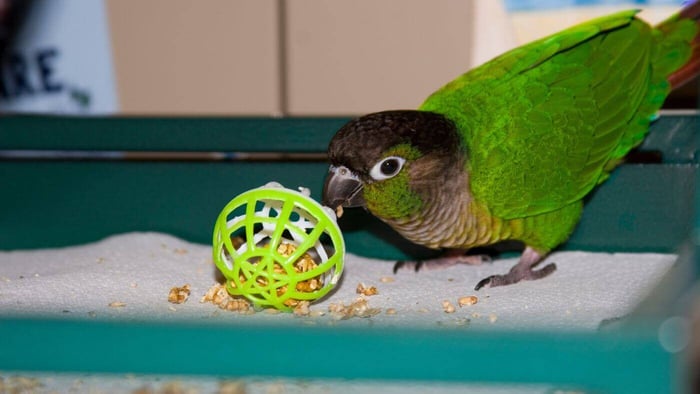
We've said it before, and we'll say it again: if you're not supplying your conure with foraging options yet, start doing so ASAP! It's one of the best things you can do to keep a parrot entertained, active and mentally stimulated.
Consider: in the wild, conures eat a wide variety of foods. Fruits, seeds, flowers, leaf shoots, nuts, berries, legumes, agricultural crops... even insects aren't always safe. None of these foods just appear in a bowl, which is why parrots evolved to be smart enough to figure out how to find and access them.
In the home, this food-finding expertise mostly goes to waste. And that's too bad! Scientists have found that parrots actually like working for their food (a concept called contra-freeloading), and that foraging helps in preventing boredom, feather plucking, excessive screaming, and even obesity.
Not all conures will take to foraging right away, but luckily, the promise of food usually sways them. Start off with something easy if your bird isn't used to the concept. Then, gradually start introducing more complicated foraging toys! Hours of fun guaranteed.
3. Conure playground
If there's one item on this list that I would recommend to any and all parrot owners, it's a birdie playground. It's just such a lifesaver for those hours (as many as possible, ideally!) that your bird spends outside its cage.
If you don't give your conure a place to hang out when it's not in its cage, it'll find one itself, and you're unlikely to appreciate the result. Lamps, ceiling fans, windowsills... everything ends up covered in poop, and possibly shredded as well.
The solution? Set up a little conure playground! You can buy premade natural wood activity gyms that have everything your birdie needs in terms of entertainment and leisure:
- Chewable bark and wood
- Toys
- Food bowls
- Comfortable natural wood perches
- Ladders
Because these playgrounds are usually light and portable, you can hang out with your bird wherever you want in your home. A metal tray, optionally with some kitchen paper, means no more poop all over the house. Happy bird, happy owner!
4. Conure activity toys
Parrots are excellent climbers. They're experts at using their beaks and feet to scale their cage and other 'hills', and will often do so even though they could easily fly their way up. Conures in particular are pure balls of energy, so what better way to tire yours out than by stimulating a behaviour it's designed to display? You can't miss a few activities and climbing toys in your conure's toy box.
As an added bonus, encouraging your bird to stay active helps prevent obesity. Domestic parrots are often overweight due to a lack of exercise, which can lead to a range of health issues. So the more yours moves around, the better!
One of the most fun ways to stimulate a conure to move and climb is with a knotted seagrass mat. These are already perfect for clambering and scaling on their own, but you can take them to the next level by attaching some toys or even perches.
5. Noise-making conure toys
Okay, this one's a little controversial. Not everyone wants to give their conure the ability to make even more noise than it already produces by itself! But if you're not sensitive to the screaming (or if you wear industrial hearing protection around the house to drown them out, like we sometimes do), your conure will likely love access to a few toys that ring or jingle.
Now, some parrot owners are suspicious of normal jingle- and cowbell toys. They can rust, or the clapper can come off and become a hazard. Luckily, there are still plenty of options. First off, you can buy elongated, indestructible stainless steel bells. The clapper in these can't be reached by curious beaks, which is an advantage with these overly curious birds.
Additionally, there are endless non-bell toys out there that your conure can make as much noise as it wants with. Choose from rattles, loose jingle balls, jingle drums, spoon chimes, and much more.
6. Conure foot toys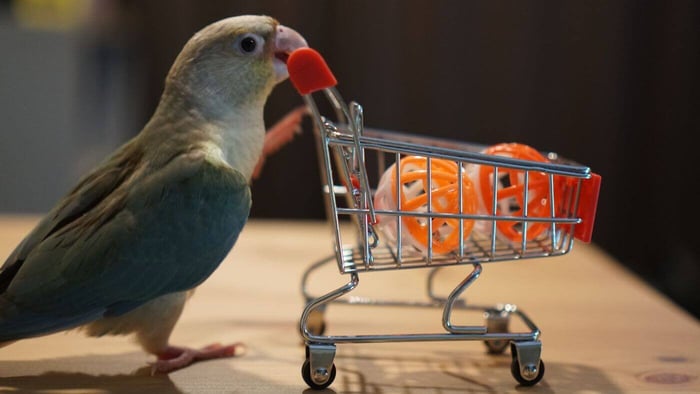
Not all parrots like foot toys. Budgies and cockatiels, for example, don't tend to use their feet to pick things up. Conures are a different story: it depends on the individual! Some use their feet for everything, while others never really seem to realise their usefulness.
If your conure regularly picks up its food using its foot, that's a good sign it may appreciate a few basic foot toys to play around with. Even if it doesn't, you can still give these compact conure toys a try, some parrots like to carry them around in their beaks instead.
The definition of a foot toy is pretty much anything that is parrot-safe and small enough to pick up, so if your conure likes them, you can go wild. Buy big sets of varied toys, or combine playtime with an opportunity for chewing by going for vine or sola balls.
7. DIY conure toys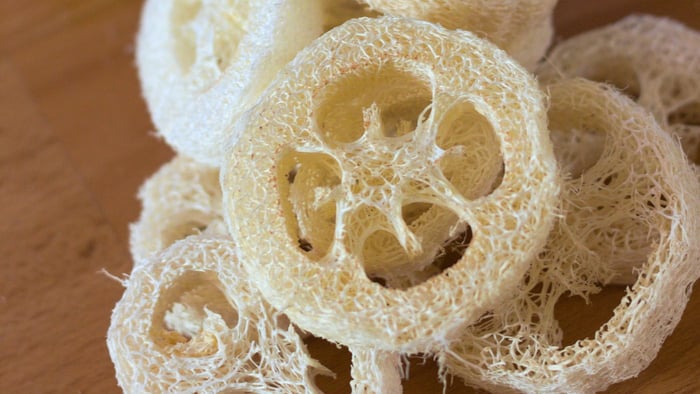
Some parrots play with care, their toys lasting for months. Others... not so much. If you're tired of spending a fortune on monthly new toy orders, it may be a good idea to look into going the DIY route instead. It's easy, fun, and most importantly: cheap.
Making your own conure toys can really bring the cost down. Intact pieces of broken toys can be used to make new ones, you can buy endless fun toy-making parts, and you may even be able to use various bits and bobs you've got lying around the house. As long as an item can be destroyed, most parrots aren't very fussy!
Materials to use include:
- Coconut shells & husk
- Muffin cups
- Coffee filters
- Dried pasta
- Dried loofah (see photo)
- Sticks with holes
- Vine balls
- Crinkle paper
Once you've gathered a few toy parts, just cut some parrot-safe rope (like raffia, sisal, seagrass) and start stacking. Finish with a sturdy pear link and voilà, a beautiful conure toy for a fraction of the price.
FAQs
How many toys should my conure have in its cage?
Ideally, your conure should have at least 3–5 toys in its cage at any one time, with a mix of chewable, foraging, and activity options. Rotate them regularly to keep your bird engaged.
How often should I change my conure’s toys?
Every 1–2 weeks is a good rule of thumb. Rotating toys prevents boredom and encourages curiosity and play.
What materials are safe for conure toys?
Look for natural woods like balsa, cholla, and manzanita, as well as parrot-safe vine, seagrass, loofah, and stainless steel. Avoid anything treated, painted, or made with small parts that could break off.
My conure is scared of toys. What should I do?
This is common in rescue or untrained birds. Try introducing toys gradually, using treats, encouragement, and demonstrations to show your bird that playtime is safe and fun.
Can I make my own conure toys?
Yes! DIY toys using coconut shells, crinkle paper, dried pasta, and safe rope like sisal or seagrass are great for creative, low-cost enrichment.


